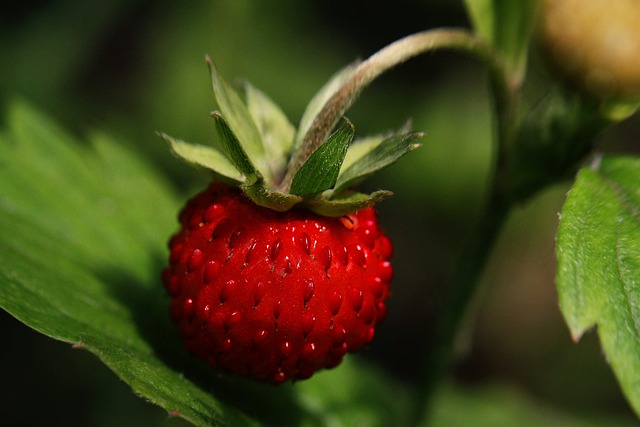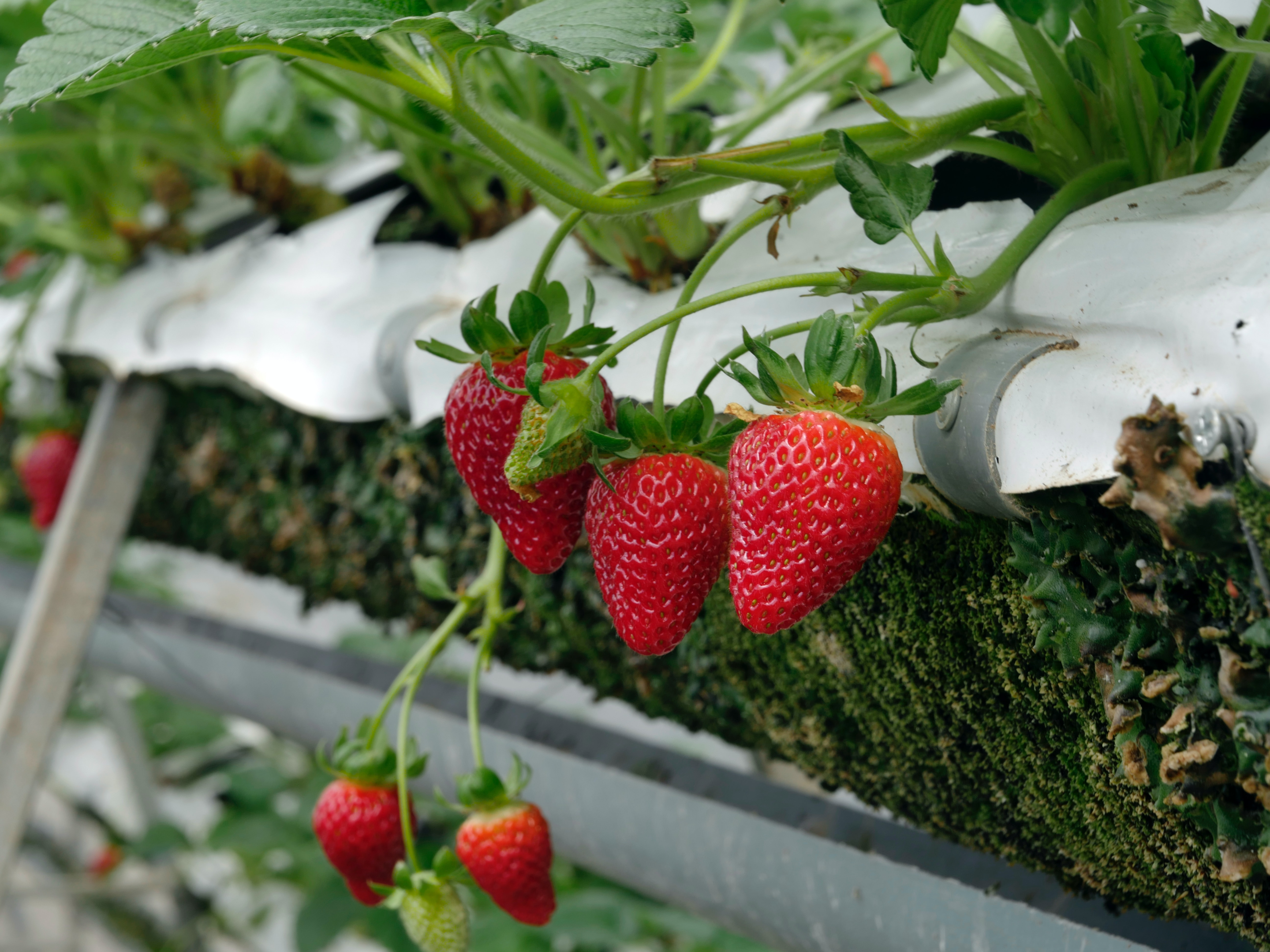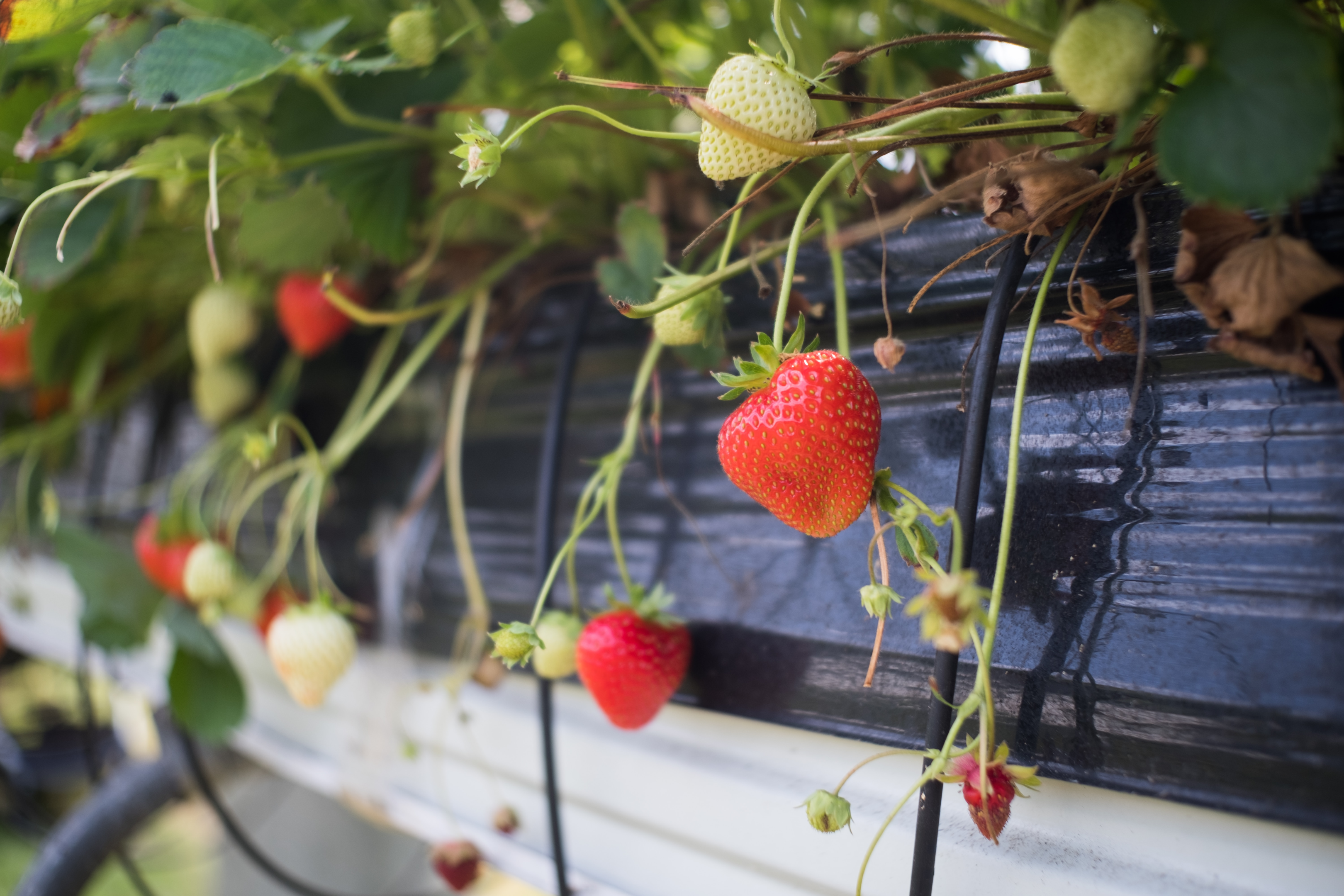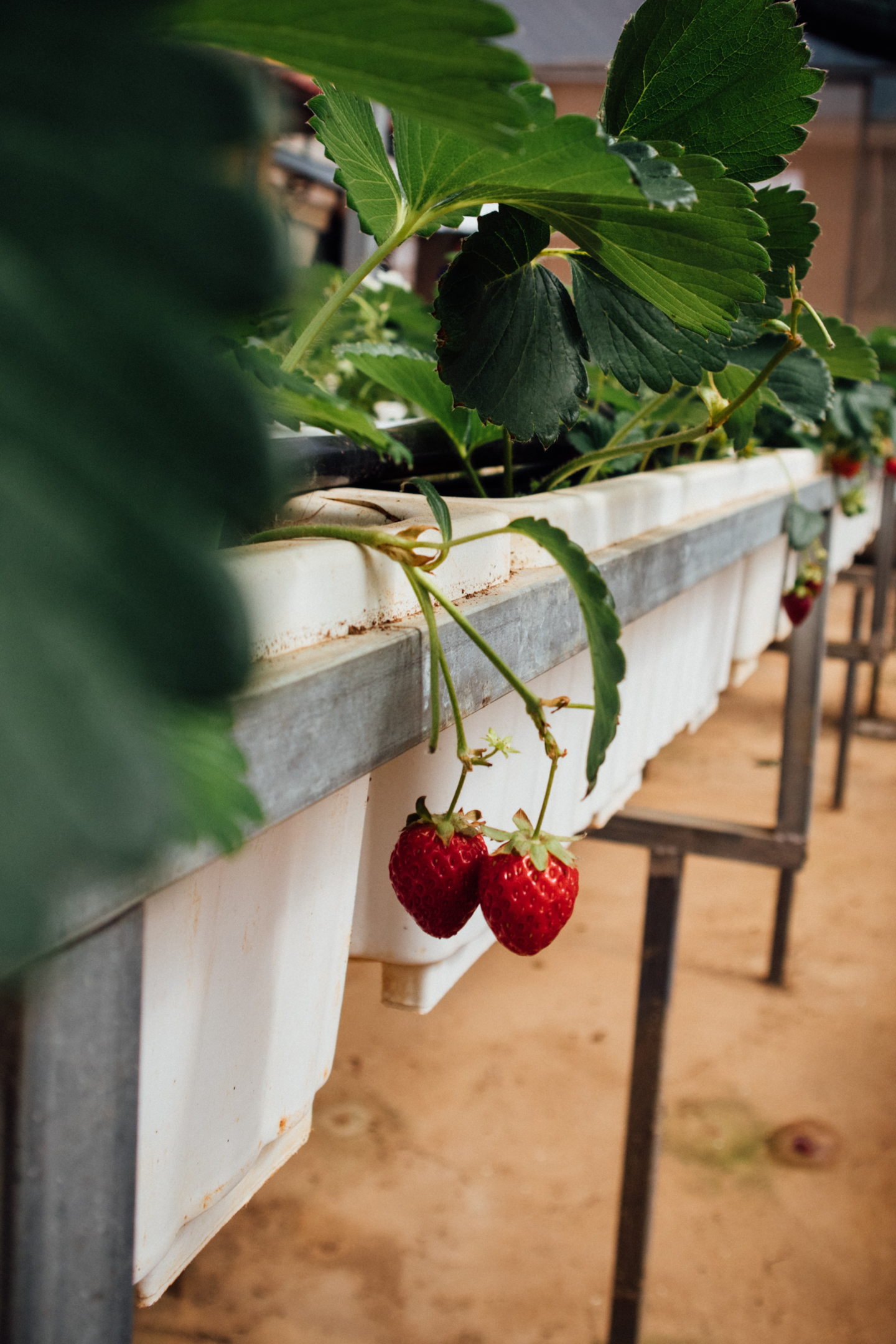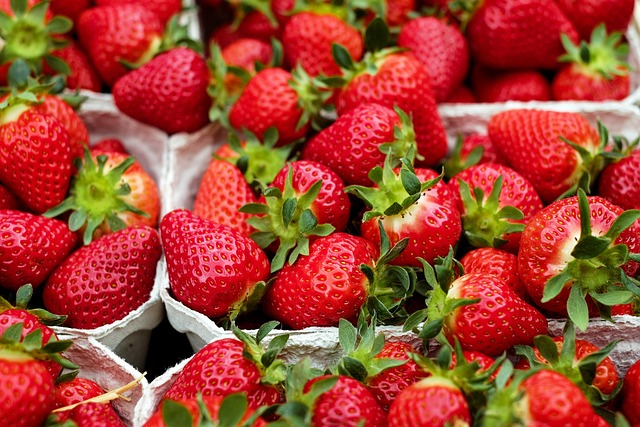HousePlantJoy is supported by our audience. When you purchase through one of our links, we may earn a small affiliate commission. As an Amazon Associate I earn from qualifying purchases. Your cost is not affected.
==================
Do you love strawberries but need more space for gardening? Don’t worry! There’s a clever solution – you can grow strawberries in hanging baskets. These baskets are designed to make the most of small spaces, and if you choose the right strawberries, the hanging plants will look beautiful and give you a delicious food crop. So, even with limited space, you can still enjoy growing and harvesting your fresh strawberries.
Growing Strawberries in Hanging Baskets
Growing strawberries in hanging baskets come with many benefits. One advantage is that you can turn the baskets at a height that feels comfortable for you. It also lets you move the baskets indoors during bad weather or frost, protecting the plants. Another plus is that the strawberries won’t be sitting in water, which can harm them. Furthermore, by hanging the baskets, you keep the strawberries away from insects that could harm them or spread diseases.
However, it’s important to note that even though the baskets are hanging, bees can still reach the strawberries to pollinate them. This is good because the bees help the strawberries grow into fully-formed, rounded fruits. So overall, growing strawberries in hanging baskets is a convenient and beneficial way to cultivate these delicious fruits.
When is the Right Time to Plant Strawberry in Hanging Baskets
For a successful strawberry harvest, plant garden-ready strawberry plants or crowns in early to mid-spring to allow enough time for growth and fruit production during their regular season. Although strawberries can handle chilly spring nights, you may need to catch up before your average last frost date.
Prepare the soil by loosening it, removing weeds, and incorporating organic matter for improved drainage. Choose a sunny location and space the plants adequately to promote growth and airflow. Keep an eye on the weather; if there’s a risk of late frost, protect the plants with frost cloth or straw. With proper care and timing, you can enjoy a bountiful harvest of sweet and juicy strawberries in late spring or early summer.
Basket Placement
To grow strawberries in hanging containers successfully, choose a location with at least six hours of direct sunlight daily. Some Alpine varieties can tolerate a bit more shade, but checking the tags with your specific plants for more information is essential. You have plenty of options for hanging spots, such as your front porch, back deck, or anywhere you can hang an S-hook or set up a hanging basket stand. Feel free to get creative with the placement.
While selecting the location, consider practicality, too. Make sure it’s a spot you can easily reach to water and harvest the strawberries. You should invest in an extended sprayer wand to water more efficiently and accurately. You can easily tend to your hanging strawberry garden and enjoy its sweet fruits.
Which Varieties Are Suitable for Hanging Strawberries?
Choosing the right plant varieties is essential to successfully growing strawberries in hanging baskets. You want strawberries that produce small berries and don’t create too many runners or “daughter” plants. While June-bearing strawberries are famous for traditional gardens, they’re unsuitable for hanging baskets because they send out many runners, diverting energy from fruit production.
For your hanging strawberry garden, the best choice is day-neutral strawberry plants. These plants can bear fruit at least twice a year – once in early summer and again in the fall. In some optimal conditions, they may even produce berries throughout the growing season, earning them the nickname “ever-bearers.”
Here are some excellent day-neutral strawberry varieties perfect for your hanging baskets:
- ‘Tristar’
- ‘Tribute’
- ‘Mara des Bois.’
- ‘Evie’
- ‘Albion’
Aside from day-neutral varieties, you can also consider ‘Quinalt’ and ‘Ogallala’ for growing strawberries in small spaces. These varieties offer more options for delicious, homegrown strawberries, even with limited gardening room.
Growing Strawberries in Hanging Baskets: Location and Procedure
The ideal position to hang strawberries is sunny, airy, and completely protected from wind and rain. They prefer humus and nutrients dense soils with moderate acidity. The soil is somewhat moist, and strawberries don’t tolerate waterlogging. Hanging strawberries can grow partially shaded but produce less than in an opulent spot.
Tip: Hanging strawberries are not buried under the ground to keep them clean so they remain clean and not moldy when planted.
Secret Tips on How to Grow Hanging Strawberry Plants
The next step is choosing your container when choosing various hanging strawberry plants. The plant basket, usually a wire basket, must be 15 inches (33-64″) deep enough to hold the roots from the top up. This diameter will allow 3 to 5 trees to thrive. Line your basket with water to keep your soil from drying out, and fill with soil with fertilizers and organic matter for good health. Avoid using specially designed water retention soil for ornamental purposes as they may contain hydrogels or chemical Polymers.
How to Grow Strawberries in Hanging Baskets
Now that you’ve chosen the correct type of hanging strawberry plants, it’s time to pick a container for your hanging strawberry garden. The container is usually a wire basket, and it should be about 12 to 15 inches (31 to 38 cm) tall, deep enough to accommodate the plant roots. This size should allow enough space for three to five plants.
To prepare the basket, you can line it with coir or peat moss to help retain water. Alternatively, you can buy a self-watering basket and fill it with soil with good-quality fertilizer or compost. However, avoid using moisture-retaining soils designed for ornamental plants, as they contain hydrogels or chemical polymers unsuitable for strawberries.
For the best results, plant the strawberry plants in the spring, preferably near spring-blooming flowers that attract bees. Bees are essential pollinators for strawberries to produce fruit. When placing the hanging strawberry plants in the container, position them closer together than you would in a regular garden.
Hanging Strawberry Care Tips
Remember to water the strawberries daily once you’ve planted the strawberries in the baskets. These small planters have limited nutrients, so you must fertilize them regularly. Before blooming, fertilize once a month. While watering, avoid getting the fruit wet to prevent rotting, but make sure the plants don’t dry out.
Feed the hanging strawberry garden at least once a month for fertilization after blooming with a controlled-release liquid fertilizer high in potassium and low in nitrogen.
The hanging strawberry plants (except Alpine varieties) need six to eight hours of full sun daily to ensure optimal fruit production. Harvest the fruit as soon as the berries turn red, preferably in dry weather, and be careful to leave the green stalk intact when picking the fruit. Remove any runners from the strawberry baskets.
If there’s intense heat or the risk of frost or heavy rain, move the hanging strawberry garden to a sheltered area. Each spring, repot the hanging strawberries with fresh soil. You can enjoy the prize of your labor for up to three years, after which it might be time to get new plants for your strawberry baskets.
Supplies for Planting Strawberries in Hanging Pots
You’ll need strawberry plants, a hanging basket, and suitable soil to create a successful hanging strawberry garden.
Choose a pot with drainage holes because strawberries don’t like to be in waterlogged soil. Plastic pots are a good option as they dry out faster and are less likely to break if accidentally dropped. Another convenient choice is a self-watering hanging basket, which reduces the frequency of overhead watering.
Use soil that is specially formulated for containers and provides proper drainage. Avoid using regular garden soil in pots, as it can lead to overly moist conditions that can make the plants unhappy and susceptible to bacteria and fungi.
Harvesting Strawberry Plants in Hanging Baskets
The optimal time to harvest strawberries is when they are entirely red and slightly firm but not too soft or mushy. When picking the fruit, avoid plucking it directly off the stem, as it could damage both the berry and the remaining limb. Instead, use clean gardening shears to carefully cut the fruit and a small portion of the stem for a proper and gentle harvest.
You Can Do It
Implementing the best tips for hanging a strawberry planter can significantly enhance your success in growing strawberry plants. By carefully selecting the suitable planter, ensuring proper placement and orientation, optimizing sunlight exposure, maintaining consistent watering and fertilization, and addressing potential pest and disease issues, you can create an ideal environment for your strawberry plants to thrive. Please monitor the plants’ health and adjust your care routine to support optimal growth and fruit production. With these strategies in place, you are well on your way to enjoying a bountiful harvest of delicious, homegrown strawberries right from the comfort of your hanging planter. Happy gardening!
FAQs
Can strawberries be grown in hanging baskets?
Yes, strawberries can be successfully grown in hanging baskets. Hanging baskets offer an excellent space-saving solution and can be a fun way to cultivate strawberries in small gardens or on balconies.
When is the best time to plant strawberries in hanging baskets?
It’s best to plant strawberries in hanging baskets during the early spring or late summer when the weather is mild. This allows the plants to establish their root systems before the heat of summer or the cold of winter.
How much sunlight do strawberries in hanging baskets need?
Strawberries generally require at least 6-8 hours of direct sunlight daily to thrive. Place the hanging basket in a location that receives adequate sunlight, preferably facing south or southwest.
How often should I water my hanging strawberry plants?
The watering frequency depends on the weather conditions and the size of the hanging basket. Generally, check the soil moisture regularly and water when the top inch of the soil feels dry. Avoid overwatering, as strawberries are susceptible to root rot.
How can I prevent pests from attacking my strawberry plants?
To prevent pests, regularly inspect your plants for signs of infestation, such as holes in leaves or visible insects. Consider using natural pest deterrents like neem oil or introducing beneficial insects that prey on pests. Applying mulch around the plants can also deter certain pests.
?? Houseplant Lovers Unite! ??
? Hey there, green thumbs and plant enthusiasts! Looking to add a touch of nature to your life? ?? Look no further than Houseplant Joy! ??
?? Let’s grow together! Follow us on Facebook, Instagram, and Twitter to embark on an exciting journey of houseplant bliss. ??
? Facebook: Dive into the world of houseplants and tips at facebook.com/houseplantjoyblog. ??
? Instagram: Immerse yourself in a visual feast of stunning houseplant inspiration at instagram.com/houseplantjoy20. ??
? Twitter: Stay in the loop with our green community and stay updated on the latest trends in the houseplant world at twitter.com/HouseplantJoy. ??
? Why Should You Join Us? ?
? Get insider secrets: Unearth the best-kept secrets to keep your plants thriving and blooming like never before. ??
? Expert advice: Gain access to our team of seasoned plant enthusiasts and gardening experts eager to help you on your plant journey. ???
? Engage with like-minded souls: Connect with fellow plant lovers, exchange stories, and build a supportive community. ??
?? Join us today! Follow Houseplant Joy on Facebook, Instagram, and Twitter for daily inspiration and a blooming good time! ?? #HouseplantJoy #GreenThumbsUnite #HouseplantLove


